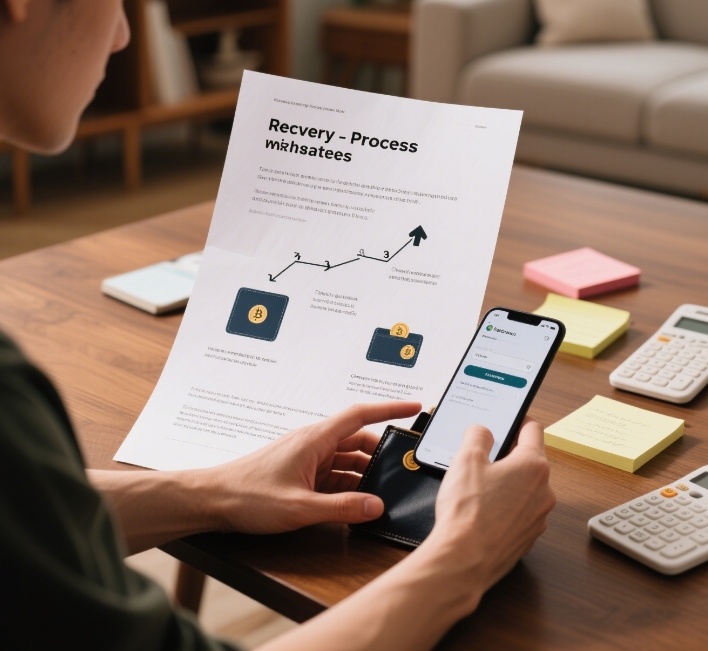Imagine waking up to find your crypto exchange account drained. According to Chainalysis' 2025 Mid-Year Report, exchange breaches surged by 18% globally in H1, with crypto exchange security vulnerabilities causing over $4 billion in losses. As exchanges rush to patch vulnerabilities, post-breach customer support becomes the critical lifeline for affected users. Navigating this chaos requires knowing exactly how exchanges should support you during a security breach – and what you need to do. This guide cuts through the confusion.
Step 1: Confirming the Breach - Don't Panic, Verify First
A flood of 'Urgent Security Alert!' emails? Your first step is crucial. Is it real, or a phishing trap? Here’s how to be sure:
- Official Channels ONLY: Never click links in suspicious emails. Instead, type the exchange's official URL directly into your browser or use its official mobile app. Check its 'News' or 'Status' page for confirmed breach announcements.
- Official Socials & Reputation Checks: Genuine breach notifications will appear on the exchange's verified Twitter/X account or blog. Search reputable sources like CoinDesk or Cointelegraph for confirmation.
- Verify Communication Legitimacy: Official support will never ask for your password or seed phrase via email or chat. Ever. Think of it like your bank guard suddenly demanding your PIN – instantly suspicious! Treat any such request as a major red flag.
Step 2: Immediate Action - Lock Down Your Assets (Yours & the Exchange's)
Once the breach is confirmed, the customer support clock starts ticking. Here's what the exchange should do and what you must do right away:
- Exchange Lockdown Protocol: Expect the platform to immediately pause all withdrawals and new logins ("maintenance mode"). This prevents further theft while forensic investigation begins. Confirm this status via the exchange’s official communication channels.
- Your Security Checklist:
- Password Power-Up: Immediately change your exchange password. Make it LONG and UNIQUE. Reusing a weak password is like locking your vault with a gum wrapper! (Use a password manager!)
- Enable Every Security Layer: Activate Two-Factor Authentication (2FA) immediately, if not already. A hardware security key (like a Yubikey) is the gold standard, far stronger than SMS or email 2FA. Review linked devices & sessions and revoke any unknown ones.
- Isolate Funds: Transfer unaffected funds to a secure hardware wallet (e.g., Trezor Model T or Ledger Stax). Think of it as moving your gold bars from a vulnerable bank vault to your own ultra-secure safe at home. (Learn more on our Securing Crypto Assets guide).
- Contacting Support NOW: Act fast! Breach victims often face long delays (average 72+ hours reported by CryptoSlate, June 2025). Use the exchange's dedicated priority support channels – often an in-app chat or specific breach email address prominently displayed on their official status page. Avoid general support forms which get flooded.

Step 3: Navigating Post-Breach Communication & Recovery
The support journey after initial contact defines trust recovery.
- Transparency Timeline: Expect regular, detailed updates on:
- The scope of the breach (was it isolated or widespread?)
- The cause being investigated
- The estimated time for restoring full services
- Clear details on the compensation/recovery plan.
- Reputable exchanges like Hibt implement 24/7 dedicated breach response teams for constant communication.
- Understanding Compensation Policies: This varies widely. Be prepared to:
- Fill out detailed loss reports accurately.
- Understand if compensation comes from reserves (like Hibt’s SAFU), insurance, future fees, or tokens. Ask customer support for the specifics of your case.
- Know the expected timeline – it can take weeks or months.
- Beware Scammers Targeting Victims: Fraudsters prey on stressed users after a breach. Remember: Genuine support won’t DM you unsolicited offering "quick refunds," and won’t ask for fees upfront. Report ANY suspicious contact.
Step 4: Preventing the Next Breach - Protecting Your Future
Recovering isn't just about getting funds back; it's about strengthening your security posture.
- Essential Security Toolkit:
- Ultra-Strong, Unique Passwords: Manage them securely.
- Hardware-Based 2FA: Ditch SMS authentication. Hardware keys are paramount for crypto exchange security.
- Cold Storage Strategy: Keep the majority (>90%) of your long-term holdings offline on a reputable hardware wallet. Exchanges are "hot wallets" – convenient, but inherently riskier targets for security breaches.
- Withdrawal Whitelists: Activate exchange features that only allow withdrawals to pre-approved, verified wallet addresses. Adds a crucial barrier against unauthorized transfers.
- Breach Alert Services: Utilize tools like Have I Been Pwned to get notified if your exchange-registered email appears in a known data breach.
- Continuous Vigilance: Follow your exchange’s security announcements, enable ALL notifications, and regularly audit your security settings – at least quarterly. Treat your crypto security like brushing your teeth: essential daily hygiene!
Key Takeaway: A crypto exchange security breach is a crisis, but effective customer support is your anchor. Understanding the response process – from verification to recovery communication and fund protection – is essential. While exchanges must innovate on security fronts, your proactive steps (using hardware keys, cold storage, vigilance) dramatically lower your risk.
You Deserve Secure Trading.
Download Hibt’s Ultimate Crypto Protection Checklist – Arm yourself with pro-level security steps to prevent breaches and respond like an expert if they occur.
Navigating the complexities of crypto security demands constant vigilance and reliable resources. Hibt is committed to empowering users with the tools and knowledge for secure participation in the digital asset ecosystem.
Daniel R. Thorne
Blockchain Security Architect | Author of 19 peer-reviewed papers on cryptography & exchange security protocols | Former Lead Auditor, Coinbase Cold Storage Infrastructure Project | Contributor to NIST Cybersecurity Framework for Digital Assets